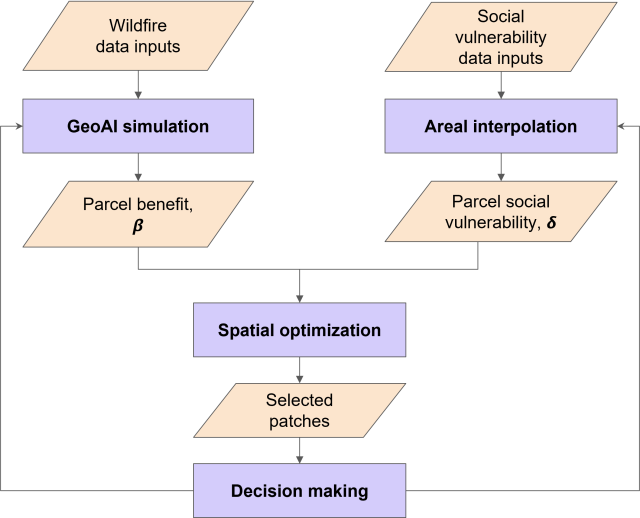Wildfire Significance
The increase in frequency, severity and scale of devastating wildfires within and around the wildland urban interface (WUI) have posed a significant threat to people, property, environment and other high value assets, both during the fire as well as post-fire due to flooding, debris flows, landslides, etc. In addition to the direct and more measurable impacts to individuals and communities, catastrophic wildfires have numerous short- and long-term secondary impacts to social capital, livelihoods, environmental services, public health, as well as disrupt supply chains and worker productivity in local and regional economies. These impacts are likely to worsen as fires in the WUI are anticipated to increase due to ongoing pressures for more housing that expands into the WUI, accumulation of biomass from historical fire exclusion practices, and greater fire danger days and extreme weather conditions due to climate change. Additionally, some populations and communities are more susceptible to the impacts of wildfire threats due to access and functional needs as well as mobility and communication limitations (e.g., elderly, low income, low English proficiency), but also from poorly designed and constructed structures. Thus, understanding, integrating and evaluating wildfire risk from hazard, exposure and vulnerability perspectives are central to developing wildfire resiliency strategies that prioritize mitigation in more holistic terms in order to balance a complex set of community values.
Co-existence
Developing wildfire risk mitigation plans based on co-existence strategies are absolutely essential. This necessarily includes creation of defensible space around structures as well has home hardening measures. Beyond this, consideration of social vulnerabilities is particularly important.

References
Murray, A.T., Baik, J., Figueroa, V.E., Rini, D., Moritz, M.A., Roberts, D.A., Sweeney, S.H., Carvalho, L.M. and Jones, C. (2023). Developing effective wildfire risk mitigation plans for the wildland urban interface. International Journal of Applied Earth Observation and Geoinformation, 124, 103531.
Contacts
